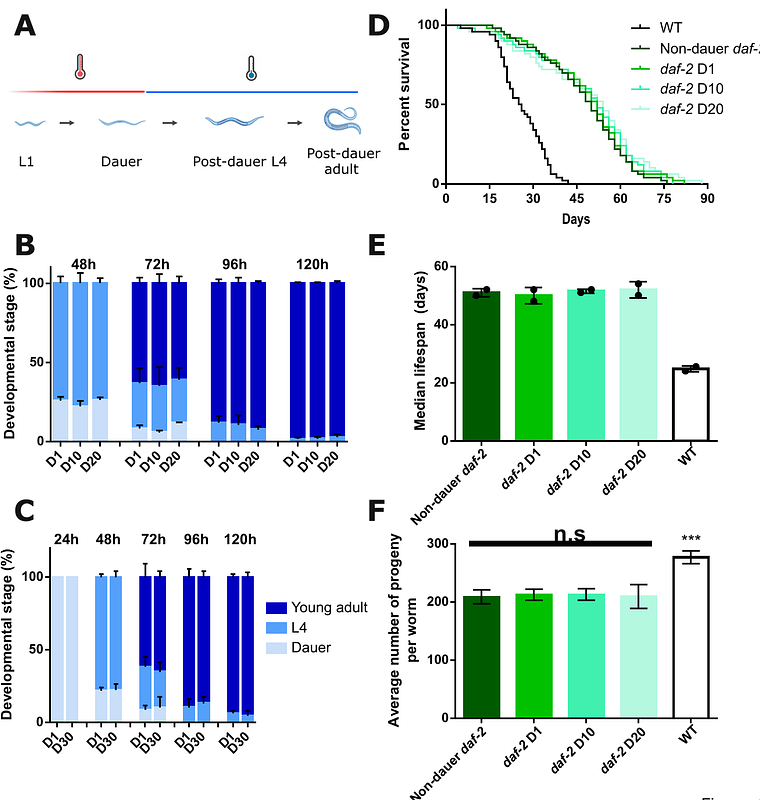Age deceleration and reversal gene patterns in dauer diapause

Age deceleration and reversal gene patterns in dauer diapause
Totska, K.; Barata, J. C. V. V.; Sandt, W.; Meyer, D. H.; Schumacher, B.
AbstractThe aging process is characterized by a general decrease in physical functionality and poses the biggest risk factor for a variety of diseases such as cancer, cardiovascular diseases, and neurodegenerative disorders among others. Understanding the naturally evolved mechanisms that slow aging and rejuvenate an animal could reveal important concepts how to prevent age-associated diseases and even revert aging. The C. elegans dauer state is a robust and long-lived alternative developmental state that after dauer exit has a normal adult lifespan with fully retained fecundity. To understand how longevity during dauer and rejuvenation following dauer exit is mediated, we characterized the gene expression changes during dauer and upon exit. We assessed how biological age, as determined via BiT Age, a transcriptome aging clock, is affected during dauer and upon dauer exit. During the dauer stage, we measured a decelerated increase in age compared to the chronological age and an age reversal following dauer exit. Transcriptomic analyses revealed major metabolic shifts and enhanced biomolecular degradation that are reversed during exit. Moreover, we show that transcription-blocking lesions can induce lasting transcription stress in dauers that is rapidly resolved by transcription-coupled nucleotide excision repair during dauer exit. Our data provide new insights into the underlying mechanisms of naturally occurring age deceleration and rejuvenation.